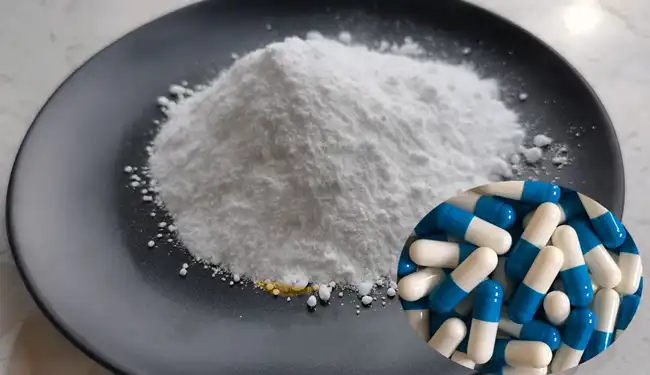Para Que Sirve La Quinina?
2024-06-27 16:43:27
The History and Origin of Quinine
A naturally occurring substance, quinine is present in the bark of the South American native cinchona tree. For millennia, native people have used it as a remedy for fevers and other ailments. Its history is long and its genesis is fascinating. Travel, trade, and medicine have all been entwined with it throughout its lengthy history.
Native Americans in prehistoric South America, especially in the Andes, used the bark of the cinchona tree, which contains a lot of quinine, to cure fevers and other illnesses. This is where Para Que Sirve La Quinina got its start. However, Europeans were not made aware of its medical benefits until the 17th century.
In the early 1600s, Jesuit missionaries in South America observed the native Quechua people using cinchona bark to treat fevers, prompting them to send samples of the bark back to Europe. The first recorded use of Para Que Sirve La Quinina in Europe was in 1631 when the wife of the Spanish viceroy in Peru was cured of malaria using the bark.
Due to quinine's rapid and extensive use by European colonists in tropical places where malaria was endemic, quinine proved to be an excellent treatment for malaria. Its reputation as a potent antimalarial agent grew, earning it the nickname "Jesuit's bark" or "Peruvian bark."
During the 19th century, Quinine Powder became a valuable commodity in the burgeoning global trade network. By growing cinchona trees in formerly British colonies like Java and India, Europe was able to lessen its reliance on supplies from South America. In order to supply the rising demand for quinine, the British East India Company established cinchona plants in India, playing a major role in this trade.

The Medicinal Uses of Quinine
The most well-known application of quinine is in the management of malaria. It works by eliminating the malaria parasites that infect red blood cells. Quinine is also used to treat a variety of other conditions, such as leg cramps and certain types of arrhythmias.
Quinine has been used medicinally for ages; it is obtained from the bark of the cinchona tree. The most well-known use of it is to cure malaria, although it also has other medical uses.
Above all, quinine is still an essential component of the treatment of malaria, especially in areas where the parasite has become resistant to earlier antimalarial medications. It functions by stopping the parasite from breaking down hemoglobin, which ultimately results in the parasite's demise. In addition, quinine is frequently taken in addition to other antimalarial drugs in order to increase effectiveness and lower the possibility of drug resistance.
Quinine Powder is useful not only for treating malaria but also for treating several muscle-related conditions including leg cramps at night. While the precise mechanism of action is not fully understood, quinine is believed to exert its effects by modulating muscle membrane excitability and reducing involuntary muscle contractions. Regulating bodies have cautioned against quinine's off-label usage because of safety issues and possible negative consequences, which make the drug's use for this application contentious.
In conclusion, quinine remains a versatile and valuable medicinal compound with diverse therapeutic applications. From its urgent part in combating intestinal sickness to its potential in treating muscle disarranges and fiery conditions, quinine proceeds to be a subject of dynamic investigate and investigation in the field of medicine.This substance looks as well robotic.However, its utilize must be carefully weighed against potential dangers and side impacts to guarantee secure and viable understanding care.
The Side Effects and Risks of Quinine
When utilized in the right sums, quinine is for the most part secure, in spite of the fact that it might have negative side impacts such queasiness, heaving, and diarrhea. Rarely, quinine may result in more severe adverse effects such blood problems and severe allergic responses.
Despite the truth that quinine has long been prized for its helpful qualities, it's significant to get it the dangers and unfavorable results of utilizing it.This substance looks as well robotic Quinine's affinity to initiate cinchonism, a ailment with indications counting cerebral pains, tipsiness, queasiness, heaving, and ringing in the ears, is the most commonly detailed side effect.These side effects, which can happen even at therapeutic doses and are frequently dose-dependent, make quinine-based treatments less tolerable and cause discomfort.
Moreover, quinine has been associated to more genuine antagonistic impacts, especially when taken in overabundance or for a longer sum of time. Quinine hypersensitivities can run in seriousness from mellow skin rashes to possibly lethal anaphylaxis in a few cases.This substance looks as well robotic. Quinine abuse has too been related with unprecedented but conceivably lethal side impacts, counting hemolytic uremic disorder, cardiac arrhythmias, and thrombocytopenia.
Quinine Powder is known to interact with a wide range of drugs, either enhancing or lessening their effects. This necessitates caution when using quinine alongside other drugs, especially those metabolized by the same liver enzymes, as it may lead to unexpected interactions and compromised therapeutic outcomes.
Growing concerns are being raised about the sustainability of quinine production, especially in light of the drug's effects on environmental and biodiversity preservation. Since cinchona trees are now widely cultivated due to the increased demand for quinine, concerns have been raised regarding the ecological balance and long-term sustainability of traditional extraction techniques.
In conclusion, quinine has demonstrated encouraging therapeutic results; yet, using it carries some risks and adverse consequences. Quinine needs to be used cautiously and safely, which calls for close consideration of these factors, following recommended dosages, and constant watchfulness for side effects.

The Future of Quinine Research
Potential applications for quinine are currently being researched. According to certain research, quinine may be used to treat particular tumors due to its anticancer qualities. To fully comprehend the possible advantages and disadvantages of use quinine for this purpose, more research is necessary. Quinine continues to be a subject of active research and exploration, offering potential applications beyond its traditional use as an antimalarial agent.
Examining quinine's ability to treat various ailments is one area of focus. Studies have shown that quinine possesses anti-inflammatory and antiviral properties, suggesting that it could be valuable in the treatment of conditions such as arthritis and certain viral infections. Researchers are delving into the molecular mechanisms underlying these effects, seeking to unlock the full therapeutic potential of quinine.
Moreover, there's a rising interest in developing novel medications exploiting the distinct chemical structure of quinine. Others with intriguing pharmacological properties can be synthesized using quinine's quinoline structure as a basis. To develop safer and more potent substitutes, scientists are attempting to alter the structure of quinine. This could result in the development of novel drugs for a variety of illnesses.
Research is also being done on quinine's ecological significance and possible medicinal uses. The cinchona tree, which naturally supplies quinine, is one of the main components of biodiversity in the Andean cloud forests. In order to meet the demand for quinine worldwide and help the protection of the cinchona tree, sustainable production methods are being promoted. This entails understanding the importance of the cinchona tree to the ecosystem.
Quinine Powder is an important natural product in history with a bright future as knowledge and study grow. Because of its innovative treatments and sustainable manufacturing techniques, quinine research is expected to have a significant impact on biotechnology, medicine, and conservation in the years to come.
Xi'an ZB Biotech Co.,Ltd is quinine powder factory, we can provide quinine capsules or quinine supplements. Our factory also can supply OEM/ODM One-stop service, we have professional team to help you design packaging and labels. If you want to learn more, you can send e-mail to Jessica@xazbbio.com or WhatsAPP+8618591943808.
Conclusion
Quinine Powder is a naturally occurring substance with a lengthy history of medical application, to sum up. Though there may be other applications, treating malaria is the most common usage for it. But quinine, like any medication, needs to be used under a doctor's supervision and with extreme caution.
For more information about quinine, please contact Jessica@xazbbio.com.
Send Inquiry
You may like
Related Industry Knowledge
- What is Pine Pollen Powder Used For?
- Can You Take Coenzyme Q10 With Fish Oil?
- Does GHK-Cu Block DHT?
- What Are Ferulic Acid's Antioxidant Properties?
- Does Arginine Aid Detox?
- Can Cats Take Melatonin?
- What Is Glycyrrhizic Acid?
- What Is Pterostilbene?
- What Is Beta-Carotene Powder Used For?
- What Does Phycocyanin Do For The Brain?


